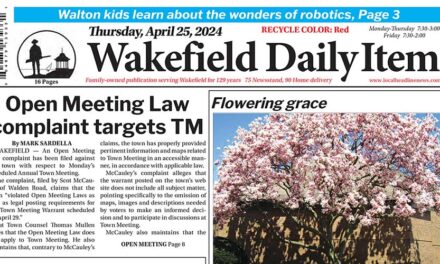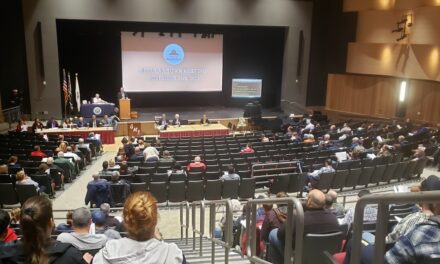Published in the February 8, 2021 edition.
WAKEFIELD — On Friday, February 5, members of Safe Streets Wakefield, Julie Smith-Galvin and Brian McCoubrey, participated in a “Walk Audit” of the Woodville Elementary School with Safe Routes to School (SRTS) Coordinator Judy Crocker, Wakefield Town Engineer Bill Renault, and Woodville Principal Matthew Carter.
The hour-long session began at 11 a.m. at the Woodville School and proceeded up Nahant Street as far as Mt. Pleasant Avenue. There will be a follow-up virtual meeting to review the SRTS’ report findings.
During the session, crosswalks, parking, sidewalks, traffic patterns, and arrival/dismissal times at the Woodville were discussed. An arrival/dismissal observation will be scheduled later in the month at the Woodville.
Later this week, Ms. Crocker will coordinate a similar walk with interested members of the Youth Council. Last November, SRTS had discussions with the Youth Council about their concerns with pedestrian and bicycle safety affecting the route between the Woodville and the Galvin Middle School.
Among the concerns mentioned were neighborhood crossings along Farm and Nahant Streets, the need for daily police details on Main Street, vehicle speeds, and second traffic lanes.
The final Safe Routes walk audit report and its recommendations will be discussed at an upcoming Safe Streets Working Group meeting this spring.
SRTS is a program of the Mass. Department of Transportation (MassDOT) that now partners with 920 schools in 237 communities. Safe Streets of Wakefield is an SRTS Alliance Partner.
Massachusetts’ Safe Routes to School (SRTS) is a free, federally funded, grades K-8 public school program that works to increase safe biking and walking by using a collaborative, community-focused approach that bridges the gap between health and transportation. Wakefield students have participated in the program’s Walk to School Day events.
A walk audit examines the outdoor surroundings of school neighborhoods and the routes that students use to walk to/from school. Participants offer their expertise as the group troubleshoots the challenges that students face by observing safety and accessibility issues as they experience walking and biking conditions firsthand. Input from the Safe Routes to School program can help the community strategize on how to improve pedestrian and bicycle safety that can best benefit Wakefield’s 3,300 students.
SRTS operates under the “Six E’s” of evaluation, education, encouragement, engineering, engagement, and equity. The Walk Audit program examines a school’s outdoor surroundings, safety, and accessibility conditions, and how transportation modes interact.
The Education component includes a pedestrian safety curriculum (grades 2-3) and a bicycle safety curriculum (grades 2-8).
SRTS helps to meet local needs including safety, traffic congestion, attendance and tardiness, new construction, and changes in school start times among other areas.




